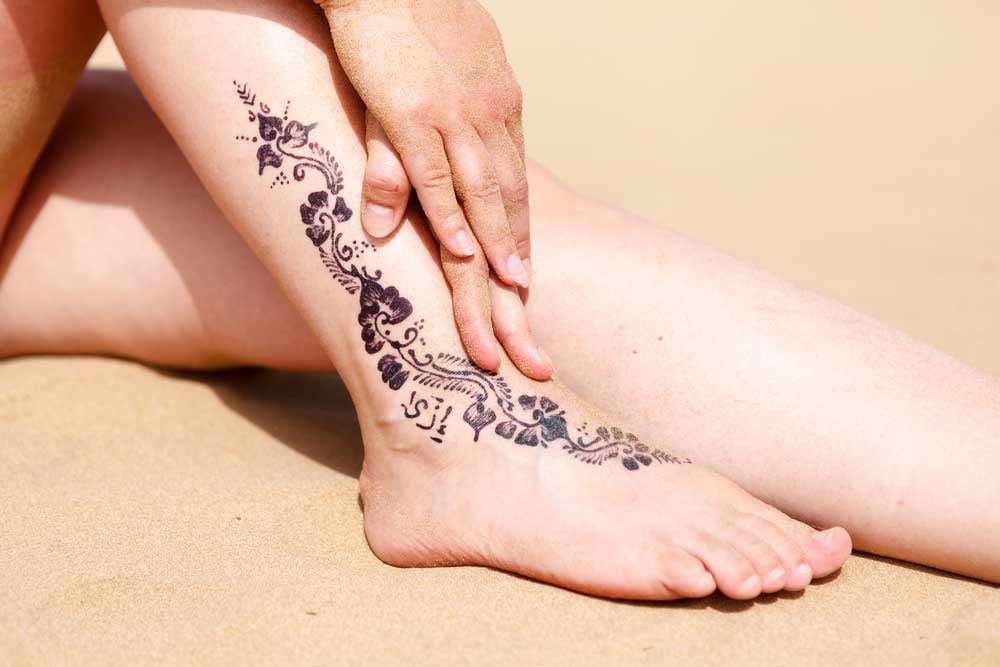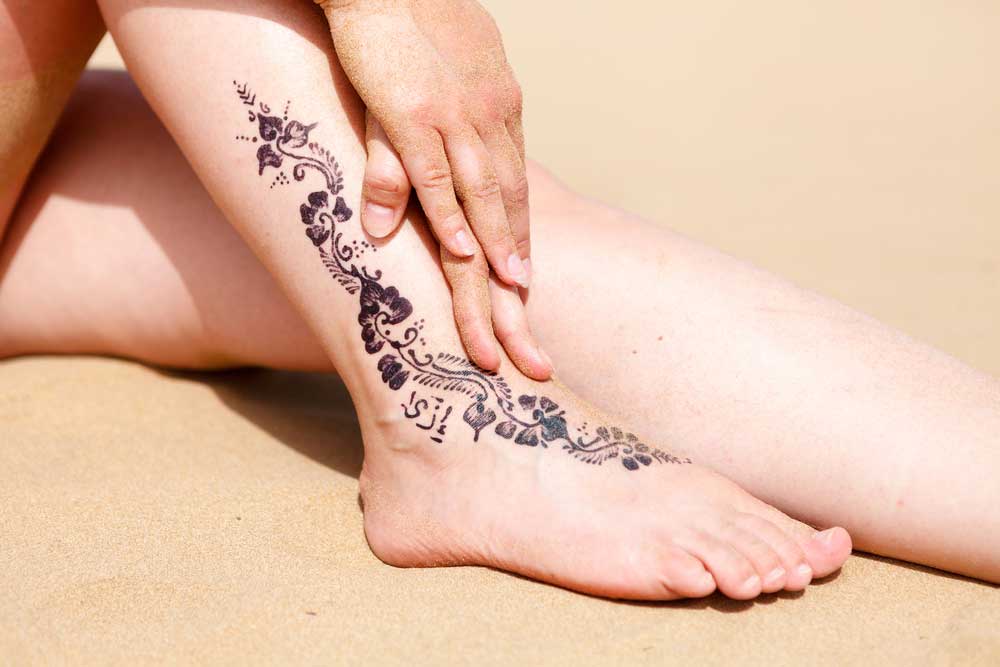Can I Get a Tattoo on My Leg if I Have a Vein Condition?

With the popularity of tattoos, many vein care patients wonder whether or not they can get a leg tattoo if they have a vein condition. The answer is yes, with proper planning and a few precautions.
If you have a vein condition and have been considering a tattoo, there are a few questions to consider before scheduling your appointment with a tattoo artist.
What if I Have Bulging Varicose Veins?
The first consideration is if you have a prominent bulging leg vein. With the presence of varicose veins, it is wise to have those veins treated before having your tattoo, especially if the bulging vein is in the area where you would like your tattoo placed.
What if I Don't Have Any Visible Signs of a Vein Condition?
if you're planning a tattoo, and you do have a vein condition but no visible veins, that shouldn't be a problem for getting a tattoo. Also, a tattoo will not cause issues for future vein treatments should you need them.
Can I Use a Tattoo to Cover Scars from Old Treatments?
For people that have had vein treatments 25 years ago may have experienced a process called vein stripping or a process of vein removal that made large incisions in the legs. Fortunately, those old treatment options are no longer done, but some patients who have experienced them in the past have chosen to place tattoos on their legs to cover up the scars.
Thankfully, vein treatment procedures have evolved and the need for tattoos to cover up scars for that reason no longer exists. Modern vein treatments do not leave scars at all. They are tiny micro-incisions that heal invisibly. Today, a tattoo is purely a personal aesthetic choice and is no longer necessary for covering scars from vein treatment.
Can I Get a Tattoo to Cover Skin Staining?
Yes, but make sure you have your vein circulation condition addressed first.
A bigger question is how to cover brown skin stains on the lower legs and ankles that can result from a vein condition that has been left untreated for too long. Hemosiderin stains, when they appear, are usually seen as a circular or oval brown patch around the calf and ankle. There isn't any reason why you can't or shouldn't put a tattoo in that area to cover up the discoloration. However, left untreated a skin stain will progress and before putting a tattoo on, be sure you don't have untreated vein reflux. Because skin staining can lighten after treatment, but very rarely goes away completely, a tattoo may be a great way of covering it up, but a tattoo is not a substitute for skipping vein treatment if there is underlying vein disease.
The only instance to be cautious about is if the skin staining has been left untreated to the point where the skin tissue breaks down and is causing a skin ulcer or is in the pre-ulcer state where there is white-appearing scar tissue. This skin is not normal and you shouldn't put tattoos on it. Once your skin has an ulcer or is in a pre-ulcer state, it will not go back to normal and a tattoo in that area should be avoided.
Careful Planning Tips for Your Tattoo if You Have a Vein Condition
Consult with a Vein Care Specialist
If you have a vein condition, talk with a vein care specialist about your vein condition before getting a tattoo to ensure that it is safe for you to do so. Depending on the severity of your vein condition, they may advise against getting a tattoo or suggest certain precautions.
Choose a Reputable Tattoo Artist
It's crucial to choose a reputable tattoo artist who follows proper hygiene practices to minimize the risk of infection. In addition, make sure they have experience working with clients who have vein conditions and can adjust their technique accordingly if necessary.
Avoid Areas with Visible Skin Irritation
If you have bulging varicose veins, it's best to avoid getting a tattoo in that specific area, as it can cause further irritation and inflammation. My recommendation is to treat the varicose veins first before getting a tattoo in that area.
Depending on the severity of your vein condition, you want to avoid any areas where the skin is diseased, which is where there may be white scarring or a healed skin ulcer.
Take Proper Aftercare Measures
After getting a tattoo, following proper aftercare measures to minimize the risk of infection and promote healing is crucial. Be sure to follow the aftercare instructions provided by your tattoo artist and consult with your doctor if you experience any unusual symptoms or complications.



